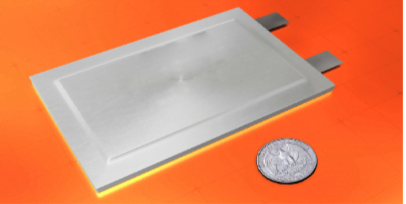Stocks rallied to finish the week, but Friday’s gains were not enough to make up for earlier losses. The S&P 500 recorded its sixth consecutive weekly loss, shedding 2.4%, while the Dow notched its seventh, dropping 2.1%, and the Nasdaq shed 2.8%.
This week investors will be watching for more clues on inflation from the U.S. Census Bureau’s retail sales report for April, due out on Friday. We can also expect an update on the housing market with April housing stats and existing home sales slated for release Wednesday and Thursday, respectively. Earnings season rolls on with quarterly reports from several major retailers, including Walmart, Target, Home Depot, and Lowe’s, lined up in the coming days.
In this edition of our weekly watchlist, we’re highlighting three unique opportunities that look good against current economic and market conditions. One of them is a newly available ticker that allows access to an area of the market typically reserved for large institutions designed to help hedge a portfolio against the effects of the compression of the yield curve. We’ve also got a name offering defensive growth from one of the most recession-resistant sectors and a real estate play with built-in perks that warrant a second look.
Traditionally one of the most stable and recession-resistant sectors, everyone needs healthcare at some point regardless of income status. A name offering defensive growth from the desirable sector currently is UnitedHealth Group (UNH). UNH’s size gives it built-in advantages over peers from the group as the most significant health insurance company by market cap and market share.
Despite the market slowdown this year, UNH’s share price is up more than 6%, outperforming its peers and the broader market. The Health Care Select Sector SPDR Fund (XLV) is down nearly 1% YTD, while the S&P 500 has shed more than 8%.
UnitedHealth reported double-digit revenue growth for 2021. Full-year revenue was listed at $287.6 billion, up 11.8% year over year. Full-year EPS increased from $16.03 in 2020 to $18.08. The company expects annual 2022 revenue of between $317 and $320 billion, the median of which implies an 11% upside year over year. UNH forecasts 2022 EPS of $20.20 to $20.50.
Thanks to UNH’s strong market position and attractive core business, Momentum should be supported in the coming years. Its expansion of international business provides substantial diversification benefits and shields against the impact of tightening U.S. regulations while allowing the Dow giant to tap into the $8.3 trillion spent annually on global healthcare.
UnitedHealth has a solid history of rewarding investors with a steady paycheck. The company went to a quarterly dividend in 2010 and, since then, has increased its dividend every year. That includes a 16% bump last year to $1.45 a share, which works out to a yield of 1.10% at its current price. UNH’s payout has increased 31% over the past five years, and the stock has a 5-year annualized dividend growth rate of 17.18%. The stock looks like a value at about 28 times earnings, compared to the healthcare industry, where the average P/E is around 37.
Next up is an investment that provides access to a part of the market usually reserved for large institutions that can help hedge a portfolio against the effects of deflation and the compression of the yield curve.
Extreme over-indebtedness has been dramatically worsened by multiple rounds of fiscal stimulus in response to the global pandemic. Deflation may be the most challenging economic environment for investors.
KraneShares Quadratic Deflation ETF (BNDD) is a fixed income ETF that seeks to benefit from lower growth, deflation, lower or negative long-term interest rates, and/or a reduction in the spread between shorter and longer-term interest rates by investing in US Treasuries and options.
The BNDD portfolio is composed primarily of long-dated US treasury bonds. In addition to bonds, the portfolio includes long-only options on the shape of the US interest rate curve. As interest rates decline, the bonds should appreciate in price. The options provide exposure to the spread between interest rates at different points in time. As the curve flattens because of lower inflation expectations and/or deflation, the price of the options tends to increase.
BNDD provides a unique access point to OTC fixed income options market, which is typically not available to investors directly. The fund has the potential for enhanced returns in periods of lower growth while options downside is limited to the market value of the options. This strategy can serve as a bond enhancement strategy and works well as a complement to other diversifying investments. Since its inception less than one year ago, BNDD has essentially matched the performance of the S&P 500 with a fraction of the risk.
As investors look for ways to improve their risk-return profiles, many seek stability and companies with a reputation for rewarding investors with regular payouts. Today we’ll discuss a particularly attractive ticker from an asset class known for offering strength and stability during highly volatile periods. This company also rewards investors with an impressive share of profits, making it a wise choice for anyone looking to shore up their long-term returns.
Real Estate Investment Trusts (REITs), one of last year’s top-performing sectors, are popular among investors due to the booming real estate market, dividend advantages, and portfolio diversification. Commercial real estate is the third-largest asset class in the U.S., and REITs may provide a diverse mix of real estate assets and long-term total returns comparable to other stocks.
When rates rise, investors often forsake high-dividend-paying equities in favor of bonds, which offer a similar return but pose less risk and volatility. According to recent statistics, REITs have one of the lowest average risks, illustrating the performance of various asset classes following rate rises across three periods. REITs did well throughout both high and low inflation eras. This implies they’re less vulnerable to prediction risk or the chance that investors accurately forecast periods of high inflation.
Life Storage, Inc. (LSI) is a self-storage REIT that invests in, owns, and manages self-storage facilities. It provides services for business, automobile, and wine storage. With over 1,000 sites in the United States and Canada, LSI owes to e-commerce driving warehouse demand and the requirement for product storage as well as the tech industry’s servers. Occupancy and rental rates have remained high due to supply chain concerns, which gives LSI an advantage over other REITs.
LSI has the kind of robust financials we all look for in a stock. They have an impressive earnings report history, most recently beating quarterly EPS projections by 6.83% and revenue expectations by 4.78%. LSI shows very healthy year-over-year numbers, with notable revenue growth of 33.03% and EPS growth of 56.14%. Until reporting again, LSI offers $230 million in sales at 90 cents per share. LSI currently has a dividend yield of 2.75%, with a nice quarterly cash payout of $1.00 per share.
LSI has a consensus price target of 154.00 among analysts that provide 12-month price estimates, with a high of 204.00 and a low of 138.00. The median estimate implies an increase of 34% over current pricing, and the consensus gives LSI a sturdy Buy rating.
Where to invest $1,000 right now...
Before you consider buying LSI, you'll want to see this.
Investing legend, Keith Kohl just revealed his #1 stock for 2022...
And it's not LSI.
Jeff Bezos, Peter Thiel, and the Rockefellers are betting a colossal nine figures on this tiny company that trades publicly for $5.
Keith say’s he thinks investors will be able to turn a small $50 stake into $150,000.
Find that to be extraordinary?
Click here to watch his presentation, and decide for yourself...
But you have to act now, because a catalyst coming in a few weeks is set to take this company mainstream... And by then, it could be too late.
Click here to find out the name and ticker of Keith's #1 pick...







